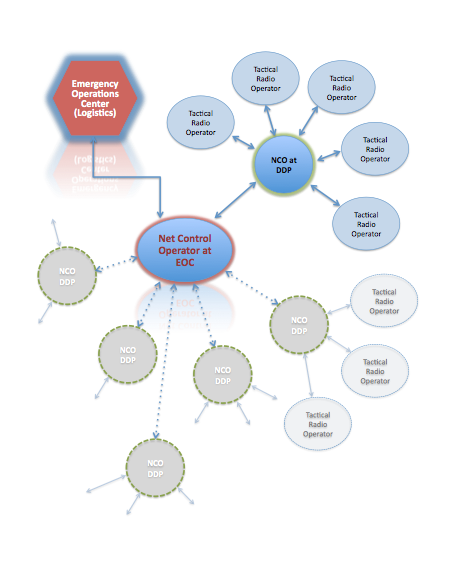Neighborhood Amateur Radio Team

Reporting Lines
In an emergency, NART personnel report to the DDP Logistics Function, following the ICS (Incident Command System) as outlined by the Department of Homeland Security under FEMA. NART members deployed to serve Disaster Districts handle radio network communications using a hub-and-spoke structure with a control operator as the “hub” at each level of organization. This operating structure is carried from the EOC all the way to the local neighborhood.
Communications Protocols
To provide orderly flow of messages during NART disaster communication activities involving a network of radio operators, NART employs “directed” and “closed” nets. This means that the net control operator (NCO), usually at the overall Incident Command Headquarters, is in charge of the communications process, and use of the frequency is controlled by that person. Likewise, tactical Net Control Operators at local DDP locations serve as hubs for communications involving resources deployed in those districts. A “closed” net means that only NART members participate in these nets.
Volunteers equipped with FRS radios who need to pass tactical traffic will do so through a similar “hub” person located at the DDP communications table. Any relay of FRS traffic to the EOC will be handled by the NART NCO at the DDP site as directed by the DDP site commander. FRS radios are incapable of communicating on the NART system.
NART “NET” Communications Structure
NCO - Net Control Operator
DDP - Disaster District Plan Location
EOC - Emergency Operations Center (City Hall
or Mobile Command Post)
ICS - Incident Command System

Organization and Leadership Team
The leadership team of NART, together with their responsibilities, are shown on a separate page. Click the small chart to the right access a larger copy.
